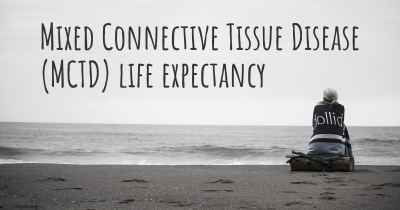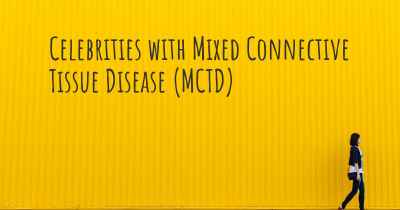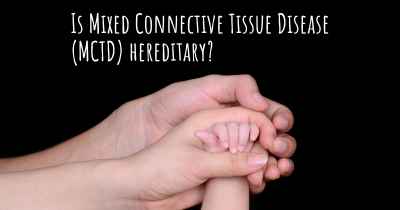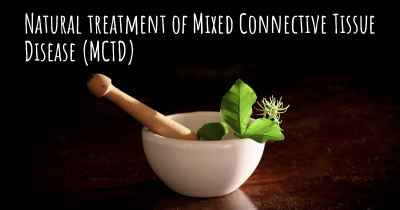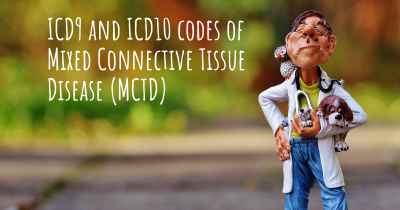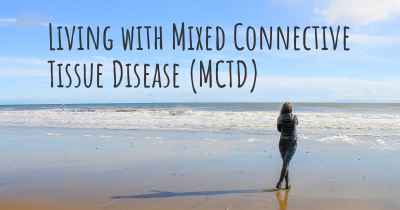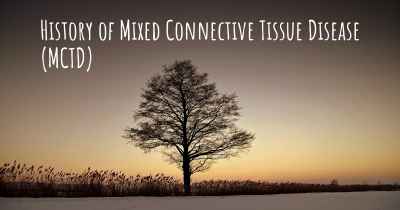Mixed Connective Tissue Disease (MCTD) diet. Is there a diet which improves the quality of life of people with Mixed Connective Tissue Disease (MCTD)?
Are you aware of a diet that can improve the quality of life of people with Mixed Connective Tissue Disease (MCTD)? Is there a diet that is suggested to avoid when having Mixed Connective Tissue Disease (MCTD)? See if there is a diet that can improve the quality of life of people with Mixed Connective Tissue Disease (MCTD), recommended and to avoid food when having Mixed Connective Tissue Disease (MCTD)

Mixed Connective Tissue Disease (MCTD) Diet
Mixed Connective Tissue Disease (MCTD) is a rare autoimmune disorder that combines features of various connective tissue diseases, including lupus, scleroderma, and polymyositis. While there is no specific diet that can cure or treat MCTD, adopting a healthy and balanced eating plan can help improve the quality of life for individuals with this condition.
The Importance of a Balanced Diet
A balanced diet is crucial for individuals with MCTD as it can help manage symptoms, reduce inflammation, and support overall health. Here are some key components to consider:
1. Anti-Inflammatory Foods
Since MCTD involves inflammation of the connective tissues, incorporating anti-inflammatory foods into your diet can be beneficial. These include:
- Fatty Fish: Rich in omega-3 fatty acids, which have anti-inflammatory properties. Examples include salmon, mackerel, and sardines.
- Colorful Fruits and Vegetables: Packed with antioxidants and phytochemicals that help reduce inflammation. Include a variety of berries, leafy greens, tomatoes, and bell peppers.
- Whole Grains: Opt for whole grains like quinoa, brown rice, and whole wheat bread, which provide fiber and nutrients that can help combat inflammation.
- Healthy Fats: Incorporate sources of healthy fats such as avocados, olive oil, and nuts, which have anti-inflammatory properties.
2. Nutrient-Dense Foods
Ensuring your diet is rich in essential nutrients can support your overall health and immune system. Include the following:
- Lean Proteins: Choose lean sources of protein like poultry, fish, tofu, and legumes to provide essential amino acids for tissue repair and immune function.
- Dairy or Dairy Alternatives: Calcium and vitamin D are important for bone health. Include low-fat dairy products or fortified alternatives like almond milk or soy milk.
- Iron-Rich Foods: MCTD can sometimes lead to anemia. Include iron-rich foods like lean red meat, spinach, lentils, and fortified cereals.
- Vitamin C: This vitamin supports collagen production and immune function. Include citrus fruits, strawberries, and broccoli in your diet.
3. Hydration
Staying hydrated is essential for individuals with MCTD. Aim to drink plenty of water throughout the day to support joint and muscle health, digestion, and overall well-being.
Individualized Approach
It's important to note that everyone's experience with MCTD is unique, and dietary needs may vary. Consulting with a registered dietitian who specializes in autoimmune conditions can help create an individualized eating plan tailored to your specific needs and preferences.
Additional Considerations
While diet plays a significant role in managing MCTD, it should be complemented by other lifestyle factors:
- Regular Exercise: Engaging in low-impact exercises like walking, swimming, or yoga can help improve joint flexibility, muscle strength, and overall well-being.
- Stress Management: Stress can exacerbate symptoms of MCTD. Incorporate stress-reducing activities such as meditation, deep breathing exercises, or hobbies you enjoy.
- Medication and Treatment: Follow your healthcare provider's prescribed treatment plan, including medications and therapies, to manage symptoms effectively.
Remember, while a healthy diet can support your well-being, it is not a substitute for medical treatment. Always consult with your healthcare provider before making any significant changes to your diet or lifestyle.
Posted Sep 17, 2017 by Tina Cavitt 3820
Posted Nov 19, 2018 by Kelly 5450
Posted Nov 23, 2018 by Miguel 300
Posted Apr 18, 2019 by DelightfullyChaotic 1220
Posted Jan 12, 2022 by Kendalla 1100
